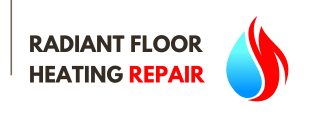Curious about radiant floor heating costs? Discover whether radiant floor heating is expensive to install and maintain, plus insights on energy efficiency and long-term savings.
Is Radiant Floor Heating Expensive to Install and Maintain?
1. Introduction
- Hook: Start with the growing popularity of radiant floor heating as a comfortable, efficient home heating option.
- Importance: Emphasize why people consider this system for comfort and energy efficiency, especially in colder climates.
- Purpose: State that this article will examine whether radiant floor heating is expensive to install and maintain and explore factors influencing costs.
2. What is Radiant Floor Heating?
- Definition: Explain radiant floor heating as a system that warms a room from the ground up by circulating warm water or electricity through pipes or heating elements beneath the floor.
- Types of Systems: Distinguish between the two main types—hydronic (water-based) and electric radiant floor heating. Highlight differences in installation, costs, and energy use.
3. Installation Costs of Radiant Floor Heating
- Average Installation Costs:
- Electric Radiant Floor Heating: Provide general cost estimates per square foot and average overall installation costs for different room sizes.
- Hydronic Radiant Floor Heating: Mention that this system is more complex and usually costs more upfront but can be more efficient in large spaces.
- Factors Affecting Installation Costs:
- Room Size and Layout: Explain how larger or irregularly shaped spaces can increase installation complexity and cost.
- Type of Flooring: Describe how certain flooring materials (e.g., tile, hardwood, carpet) affect installation costs and efficiency.
- Retrofitting vs. New Construction: Compare the cost difference between adding radiant heating to a new build versus an existing home.
- Labor Costs: Discuss labor expenses, as professional installation is typically required for both systems, and how regional pricing may vary.
4. Maintenance Costs of Radiant Floor Heating
- Routine Maintenance:
- Hydronic Systems: Mention that hydronic systems generally require annual maintenance for checking water pressure, pump operation, and leak prevention.
- Electric Systems: Electric radiant heating is lower maintenance but may still require periodic inspection of electrical connections.
- Repairs and Replacements:
- Common Issues: Describe possible issues, such as leaks in hydronic systems or electrical failures, and typical repair costs.
- Longevity: Explain that radiant floor systems generally have long lifespans, with electric systems lasting around 20-25 years and hydronic systems potentially lasting even longer.
- Energy Efficiency and Cost Savings:
- Operational Costs: Compare radiant floor heating energy costs to traditional heating systems (e.g., forced air, radiators).
- Potential Savings: Explain how even heating and zoned temperature control can reduce energy consumption, offsetting maintenance costs over time.
5. Energy Efficiency and Cost Savings Potential
- Heating Efficiency: Discuss how radiant floor heating provides uniform heat and can be more efficient than traditional systems that heat air directly.
- Reduced Thermostat Settings: Explain that because of the comfortable warmth, homeowners often set their thermostats lower, which saves energy and reduces utility costs.
- Zoning Options: Highlight that many systems allow room-specific heating, so homeowners can heat only the rooms they use, further saving energy.
- Environmental Benefits: Mention that radiant heating’s efficiency can reduce overall energy use, making it an eco-friendly option that could save on costs in the long run.
6. Comparing Radiant Floor Heating Costs to Other Heating Systems
- Initial Installation Costs: Compare radiant floor heating to traditional options like forced air, baseboard heating, or radiators.
- Long-Term Operating Costs: Explain that while radiant heating has higher upfront costs, it often costs less over time due to energy savings.
- Comfort and Value: Point out that radiant floor heating’s even warmth and quiet operation add comfort and potentially increase a home’s resale value.
7. Pros and Cons of Radiant Floor Heating
- Pros:
- Even, comfortable warmth
- Energy efficiency and potential savings
- Quiet operation and clean air (no dust circulation)
- Cons:
- Higher upfront installation costs
- Complex repairs for hydronic systems
- Installation challenges with some flooring types
8. Tips to Reduce Costs for Radiant Floor Heating
- Consider DIY Installation for Small Areas: Suggest that, with proper guidance, homeowners might handle electric radiant systems in small spaces like bathrooms to save on labor.
- Choose the Right System for Your Needs: Explain that smaller spaces or areas with minimal heating needs may be better suited for electric systems, while larger homes may benefit from hydronic heating’s efficiency.
- Opt for Energy-Efficient Materials: Recommend using materials like tile or stone that conduct heat well, maximizing efficiency.
- Regular Maintenance: Encourage routine checks, especially for hydronic systems, to prevent costly repairs and ensure efficiency.


